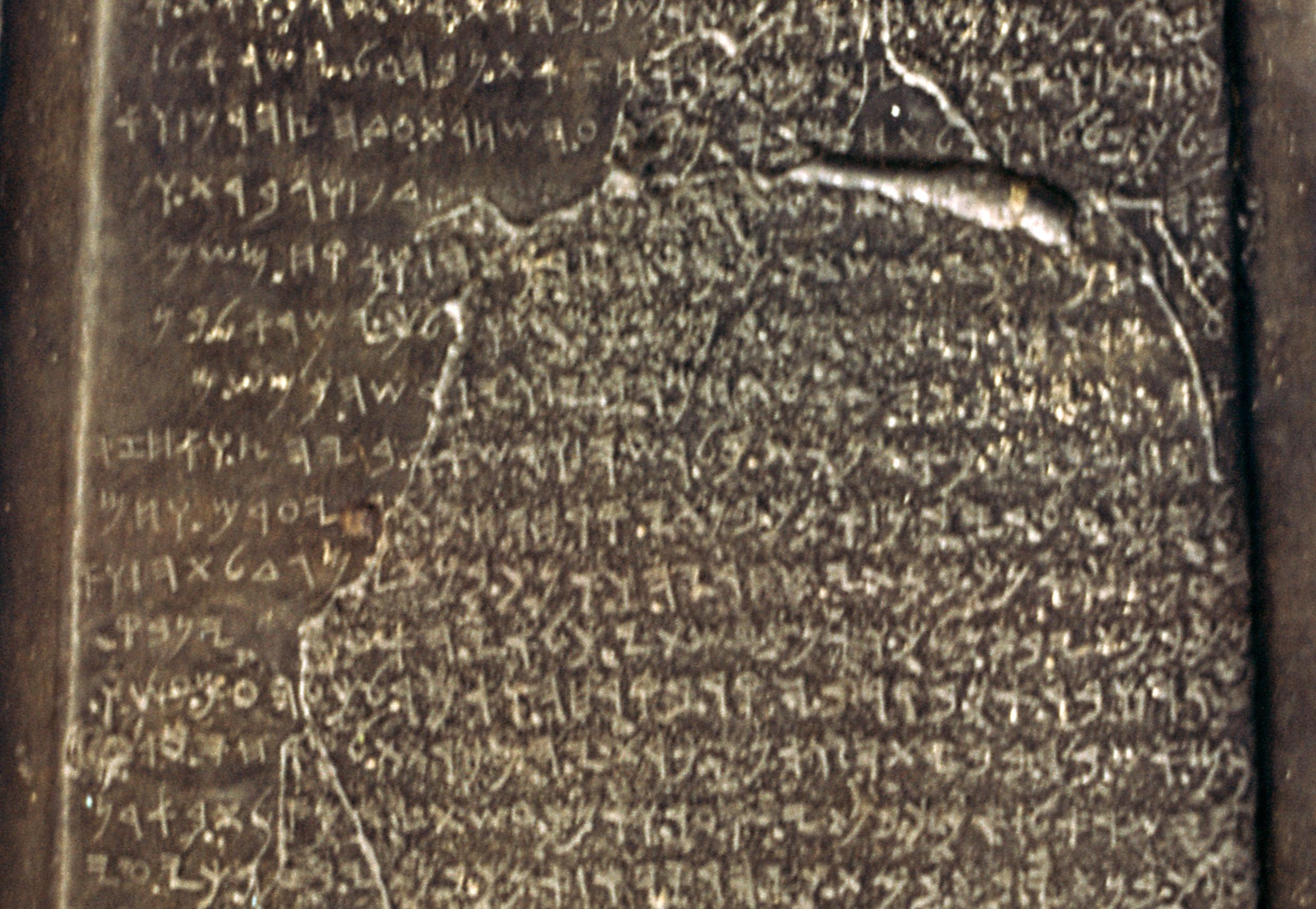
Researchers probing an ancient stone stele believe it shows a biblical king was an actual historical figure.
King Balak of Moab, located in today's Jordan, is mentioned in a passage of the Book of Numbers. In the biblical story, he asks the prophet Balaam to curse the people of Israel, as the Encyclopedia Britannica notes.
Archaeologists and historians researching the 9th century BCE Mesha Stele believe a line previously thought to read "House of David" could well refer to the biblical king. They describe their research in a paper published Wednesday in Tel Aviv: The Journal of the Institute of Archaeology of Tel Aviv University.
The stele, also known as the Moabite Stone, was erected by Mesha, another King of Moab. It describes various conflicts and conquests. Mesha, and some other figures mentioned on the stone, like King Omri of Israel, also appear in the Bible, according to Britannica. Discovered in the 19th century, the 44-inch inscribed black basalt stone now sits in the Louvre Museum.
The stele "was one of, if not the, first artifacts discovered in the beginnings of modern archaeology in the 19th century CE that made some connection between the Bible and a record written by an external source," Samuel Boyd, a professor of Jewish studies and religious studies at the University of Colorado, Boulder who was not involved in the research, told Newsweek. "Its discovery sparked major waves of archaeological research in the area and antiquities trading."

Although the stone has endured damage over the years, some of its text is still legible. Certain inscriptions are recorded in a reverse copy of the stele, according to a press release from academic publisher Taylor & Francis.
Researchers, including archaeologist Israel Finkelstein from Tel Aviv University, Israel, studied new photographs of the stone and the reverse copy to try and crack its ancient, eroded words.
Although parts of line 31 of the inscription—previously thought to refer to "House of David"—are eroded, the team think they've spotted three consonants, the first of which is the Hebrew letter "beth," which sounds like "B."
The team can't be sure, but Finkelstein thinks it's "very likely" the inscription refers to Balak. "We are dealing with a name that has three characters, starting with a B. We know from the bible that Balak was the king of Moab and that he ruled from a location in southern Moab—as described in the Stele," he told Newsweek.
Outside of the Bible, and now, the stele, historians haven't found any other mentions of Balak. Balaam, however, is mentioned in an ancient plaster inscription from Tell Deir Alla in Jordan, Finkelstein added.
In their paper, the authors write: "The new photographs of the Mesha Stele and the squeeze indicate that the reading, 'House of David'—accepted by many scholars for more than two decades—is no longer an option."
If correct, their conclusion has important implications for researchers' understanding of the local ruling forces of the time. "The reading 'Balak' instead of 'House of David' dismisses the possibility that Judah ruled over Moab. And it makes Balak a historical figure," Finkelstein explained.
But the team can't be certain, he admitted. "At the end of the day, the reconstruction of the name 'Balak' is circumstantial."
Some scholars think the team's conclusion is a little too strong. Although he praised the "high quality" and "thorough" research, Boyd warned that the presence of Balak's name on the stone may not be a sign he once actually existed.
"It is tough to judge without more evidence," he said, adding that fictional ancestors "can be invented, constructed, and used rhetorically like this," even in the relatively short space of time between Balak's purported existence and the creation of the stele.
Noting that the stone tabled remains a "fascinating artifact," Boyd said: "I'm amazed at how 31-plus lines of text continue to yield new information even 150 years after its discovery."
This article has been updated with comment from Samuel Boyd.
Uncommon Knowledge
Newsweek is committed to challenging conventional wisdom and finding connections in the search for common ground.
Newsweek is committed to challenging conventional wisdom and finding connections in the search for common ground.
About the writer
Katherine Hignett is a reporter based in London. She currently covers current affairs, health and science. Prior to joining Newsweek ... Read more
To read how Newsweek uses AI as a newsroom tool, Click here.








